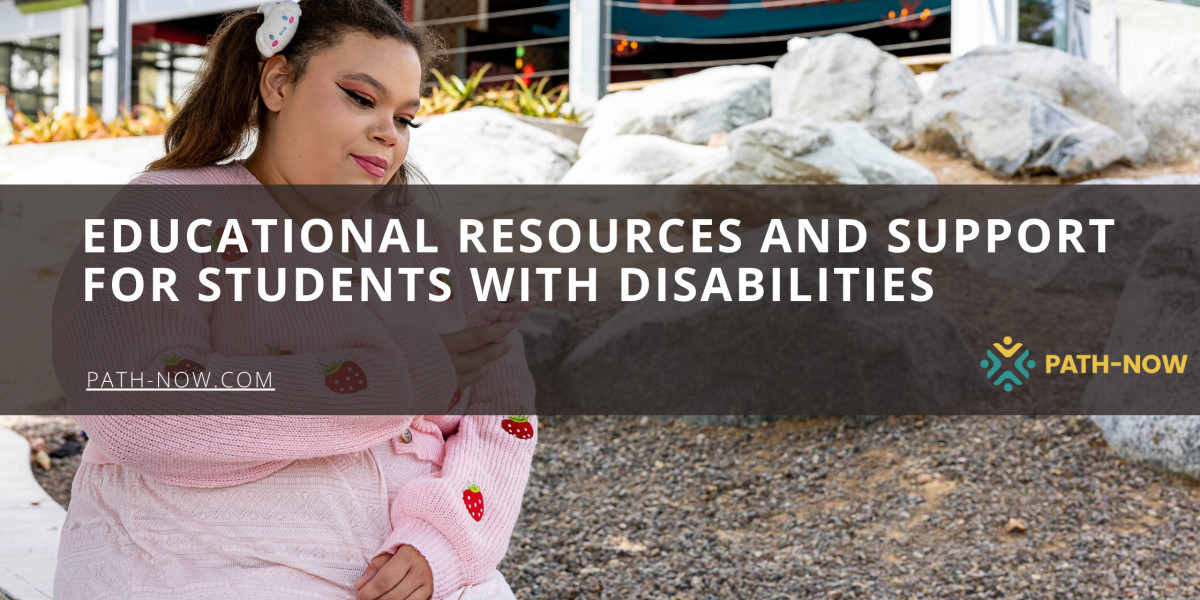Education is a fundamental right for everyone, including students with disabilities. Ensuring that these students receive the support and resources they need is essential for their academic success and personal development. This blog explores various educational resources and support systems available for students with disabilities.
Inclusive Education
Inclusive education means that students with disabilities learn alongside their peers in mainstream classrooms. This approach promotes diversity, equality, and social integration. Schools committed to inclusive education often provide:
- Individualized Education Programs (IEPs):
Tailored plans that address the specific needs of each student with disabilities. IEPs outline goals, accommodations, and services required to support the student’s learning.
- Section 504 Plans:
These plans provide accommodations for students with disabilities to ensure their academic success and access to the learning environment. This might include adjustments in teaching methods, classroom settings, and assessment techniques.
- Special Education Services:
Schools offer special education services, such as speech therapy, occupational therapy, and specialized instruction, to help students with disabilities meet their educational goals.
Assistive Technology
Assistive technology (AT) plays a crucial role in supporting students with disabilities. These tools and devices help overcome barriers to learning and enhance independence. Examples of AT include:
- Screen Readers:
Software that reads text aloud for students with visual impairments or learning disabilities, making digital content accessible.
- Speech-to-Text Software:
Programs that convert spoken words into written text, assist students with physical disabilities or learning difficulties in writing and note-taking.
- Adaptive Keyboards and Mice:
Specialized input devices are designed to accommodate physical disabilities, enabling students to use computers effectively.
- Communication Devices:
Tools like augmentative and alternative communication (AAC) devices help students with speech or language impairments communicate more effectively.
Online Learning Platforms
The rise of online education has opened up new opportunities for students with disabilities. Many online learning platforms are designed with accessibility in mind, offering features such as:
- Closed Captioning:
Videos and lectures with captions for students with hearing impairments.
- Adjustable Font Sizes and Colors:
Customizable text options for students with visual impairments or reading difficulties.
- Interactive and Visual Content:
Multimedia resources that cater to different learning styles and needs.
- Accessible Course Materials:
Digital textbooks and resources in accessible formats, such as ePub, PDF, or Braille.
Support Services
Support services are essential for the holistic development of students with disabilities. Schools and educational institutions provide various services to address academic, social, and emotional needs:
- Counseling Services:
Professional counselors help students with disabilities navigate personal, academic, and social challenges, fostering emotional well-being and resilience.
- Tutoring and Academic Support:
One-on-one or small group tutoring sessions tailored to the student’s specific needs, ensuring they keep up with the curriculum and achieve their academic goals.
- Peer Mentoring Programs:
Pairing students with disabilities with peer mentors who offer academic support, friendship, and guidance, enhances their school experience.
- Parental Involvement:
Engaging parents in the educational process through regular communication, meetings, and workshops, ensures they are informed and can advocate for their child’s needs.
Financial Resources
Accessing quality education often requires financial support. Various scholarships, grants, and funding programs are available for students with disabilities:
- Government Grants and Scholarships:
Federal and state programs provide financial assistance to students with disabilities to cover tuition, books, and other educational expenses.
- Nonprofit Organizations:
Many nonprofits offer scholarships and grants specifically for students with disabilities, helping reduce the financial burden on families.
- Institutional Aid:
Colleges and universities often have dedicated funds and scholarships for students with disabilities, supporting their educational journey.
Advocacy and Legal Support
Understanding and advocating for legal rights is crucial for students with disabilities and their families. Resources in this area include:
- Disability Rights Organizations:
Groups that provide information, advocacy, and legal assistance to ensure students with disabilities receive appropriate accommodations and support.
- Educational Advocates:
Professionals assist families in navigating the special education system, ensuring their children receive the services and support they are entitled to under the law.
- Workshops and Training:
Programs that educate parents, students, and educators about disability rights, special education laws, and effective advocacy strategies.
Conclusion
Supporting students with disabilities requires a comprehensive approach that includes inclusive education practices, assistive technology, online learning platforms, support services, financial resources, and advocacy. By leveraging these resources and creating a supportive educational environment, we can ensure that students with disabilities achieve their full potential and lead fulfilling lives. Education is a powerful tool for empowerment, and with the right support, every student can succeed.



